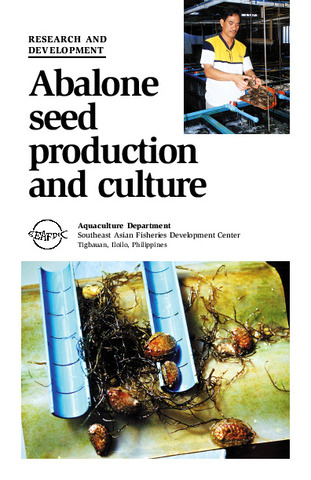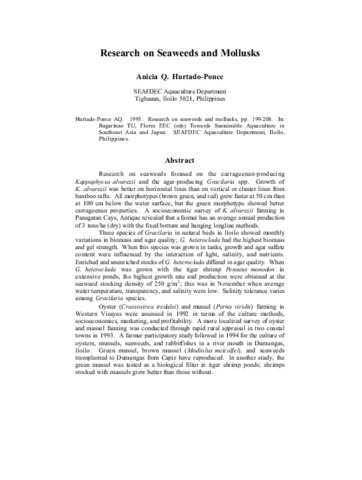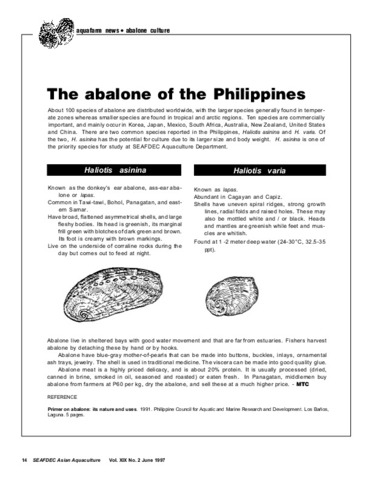Response of the tropical abalone, Haliotis asinina, larvae on combinations of attachment cues
- Global styles
- MLA
- Vancouver
- Elsevier - Harvard
- APA
- Help

View/
Date
2005Page views
1,311ASFA keyword
AGROVOC keyword
Taxonomic term
Metadata
Show full item record
Share
Abstract
The effects of different diatom species and types of substrates in combination with 0.45 μM GABA on the metamorphosis of Haliotis asinina larvae were tested. Diatom slurry elicited the best metamorphic response followed by Amphora sp., Amphora + Nitzschia and Nitzschia cf. frustulum in that order. With regards to substrate types, roughened plexiglass seemed to be the most preferred while fibrocement the least preferred surface. Overall, diatom slurry grown on plexiglass surface promoted the greatest number of metamorphosed H. asinina postlarvae. For economic considerations and practical reasons, chemical inducers like gamma-aminobutyric acid (GABA), should be used singly or separately from other settlement-inducing cues, such as the “substrate-diatom” complex.
Suggested Citation
Gapasin, R. S. J., & Polohan, B. B. (2005). Response of the tropical abalone, Haliotis asinina, larvae on combinations of attachment cues. Hydrobiologia , 548(1), 301-306. https://doi.org/10.1007/s10750-005-0754-8
Type
ArticleISSN
0018-8158; 1573-5117Collections
- Journal Articles [1258]
Related items
Showing items related by title, author, creator and subject.
-
Abalone seed production and culture
Unknown author (Aquaculture Department, Southeast Asian Fisheries Development Center, 2000)Details the research conducted at AQD for the tropical abalone Haliotis asinina. AQD has developed the rudiments of a hatchery protocol. -
Research on seaweeds and mollusks
Hurtado-Ponce, Anicia Q. (Aquaculture Department, Southeast Asian Fisheries Development Center, 1995)Research on seaweeds focused on the carrageenan-producing Kappaphycus alvarezii and the agar-producing Gracilaria spp. Growth of K. alvarezii was better on horizontal lines than on vertical or cluster lines from bamboo ... -
The abalone of the Philippines
Castaños, Milagros T. (Aquaculture Department, Southeast Asian Fisheries Development Center, 1997)





